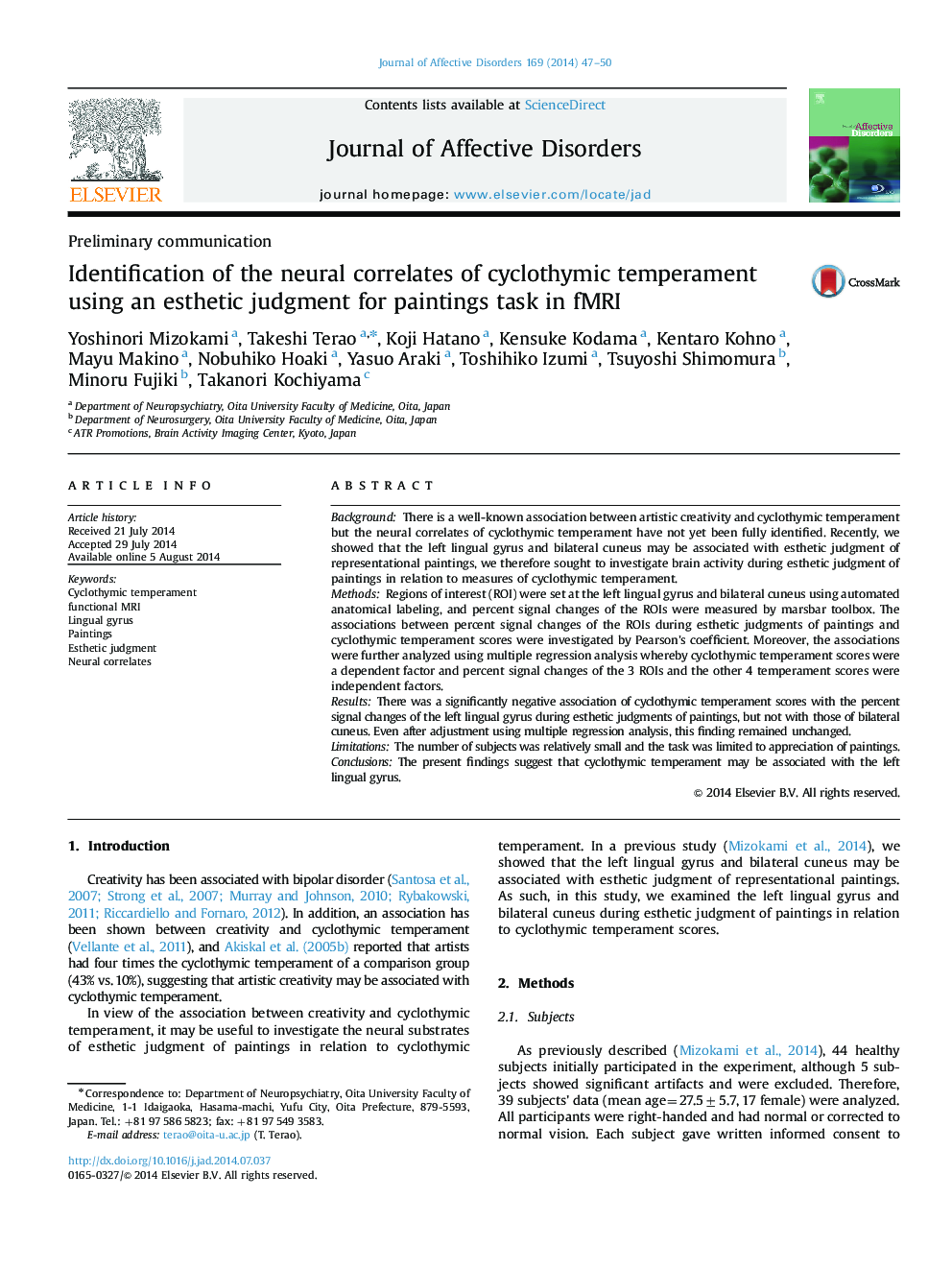| Article ID | Journal | Published Year | Pages | File Type |
|---|---|---|---|---|
| 6232407 | Journal of Affective Disorders | 2014 | 4 Pages |
BackgroundThere is a well-known association between artistic creativity and cyclothymic temperament but the neural correlates of cyclothymic temperament have not yet been fully identified. Recently, we showed that the left lingual gyrus and bilateral cuneus may be associated with esthetic judgment of representational paintings, we therefore sought to investigate brain activity during esthetic judgment of paintings in relation to measures of cyclothymic temperament.MethodsRegions of interest (ROI) were set at the left lingual gyrus and bilateral cuneus using automated anatomical labeling, and percent signal changes of the ROIs were measured by marsbar toolbox. The associations between percent signal changes of the ROIs during esthetic judgments of paintings and cyclothymic temperament scores were investigated by Pearson׳s coefficient. Moreover, the associations were further analyzed using multiple regression analysis whereby cyclothymic temperament scores were a dependent factor and percent signal changes of the 3 ROIs and the other 4 temperament scores were independent factors.ResultsThere was a significantly negative association of cyclothymic temperament scores with the percent signal changes of the left lingual gyrus during esthetic judgments of paintings, but not with those of bilateral cuneus. Even after adjustment using multiple regression analysis, this finding remained unchanged.LimitationsThe number of subjects was relatively small and the task was limited to appreciation of paintings.ConclusionsThe present findings suggest that cyclothymic temperament may be associated with the left lingual gyrus.
